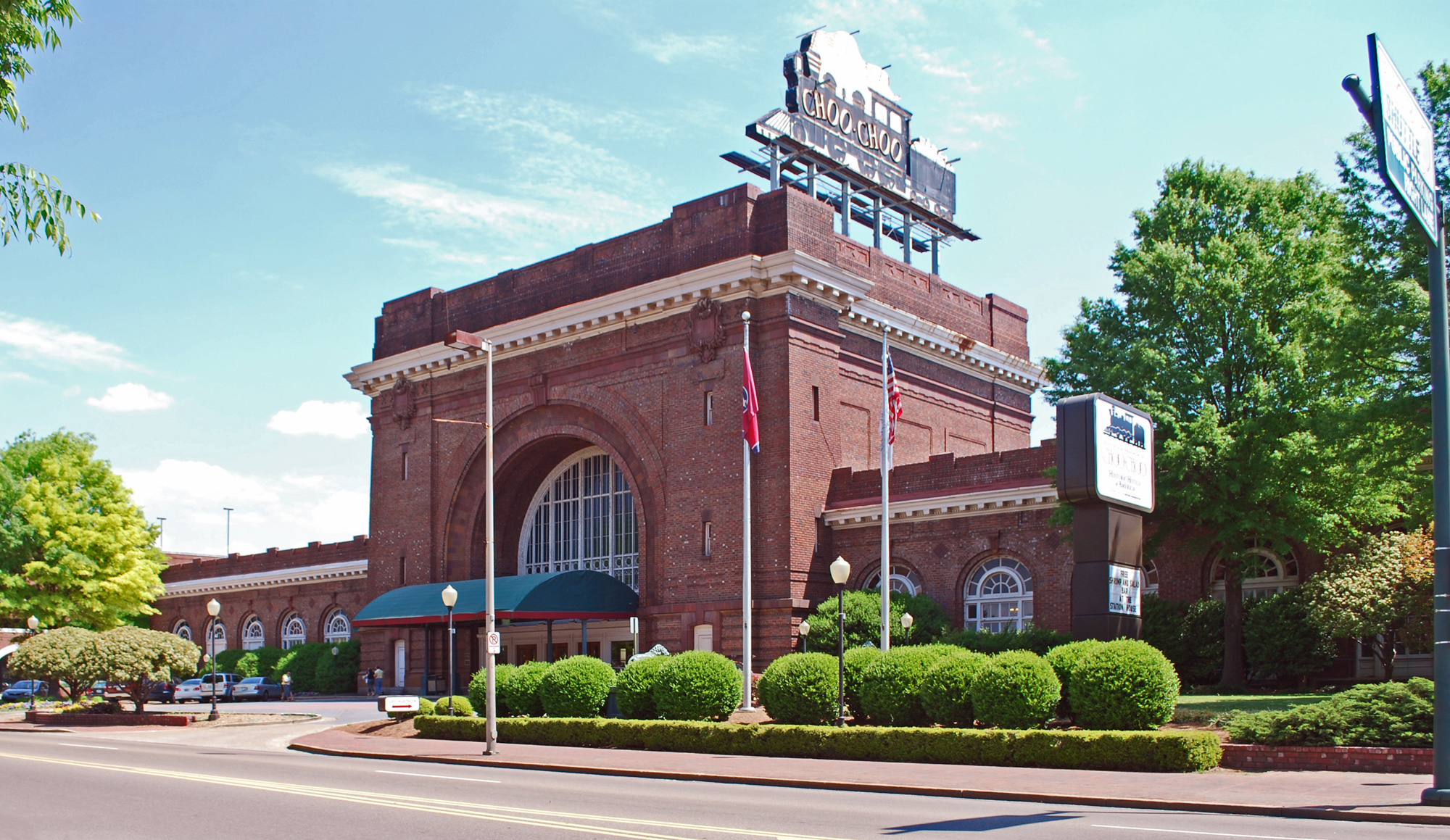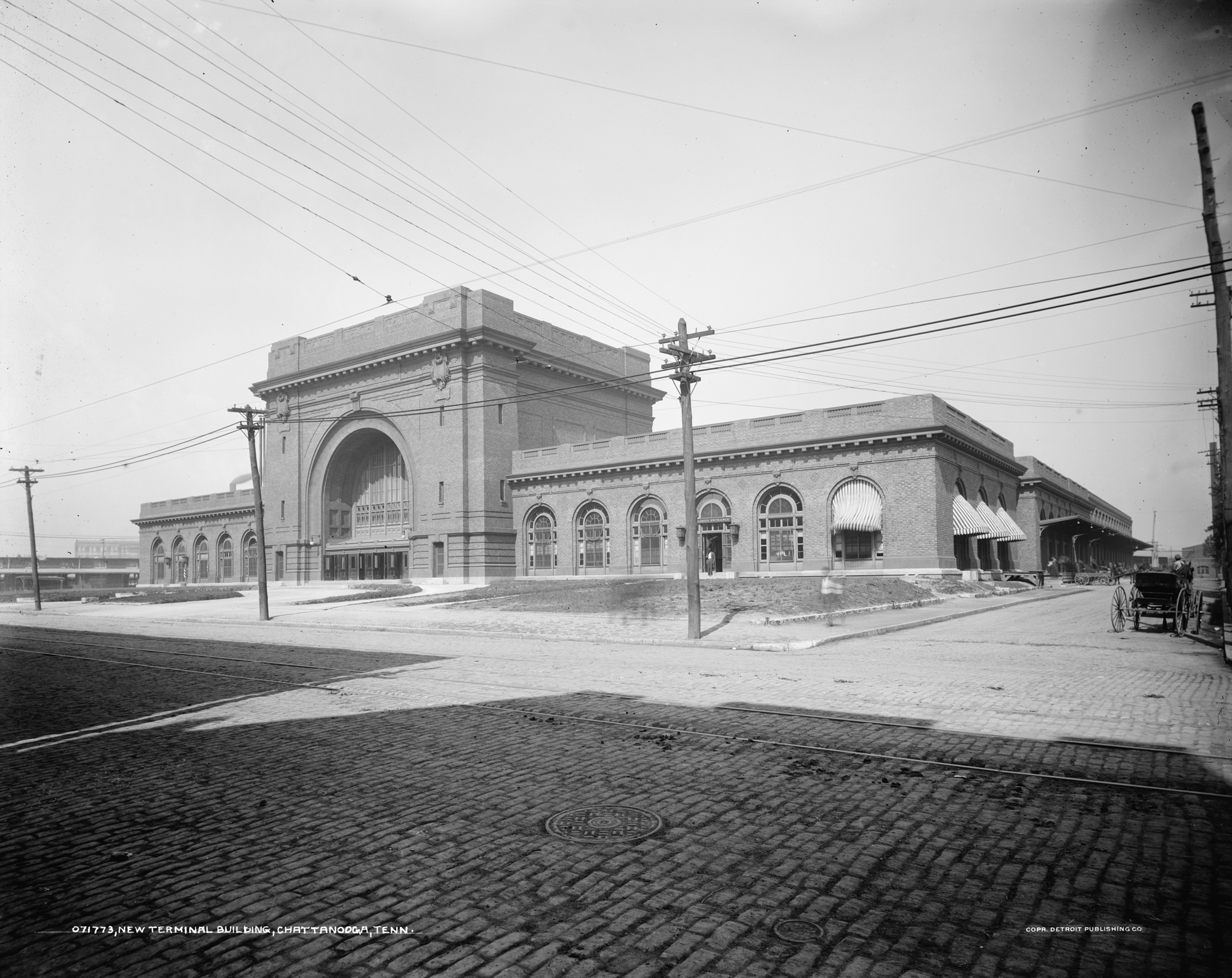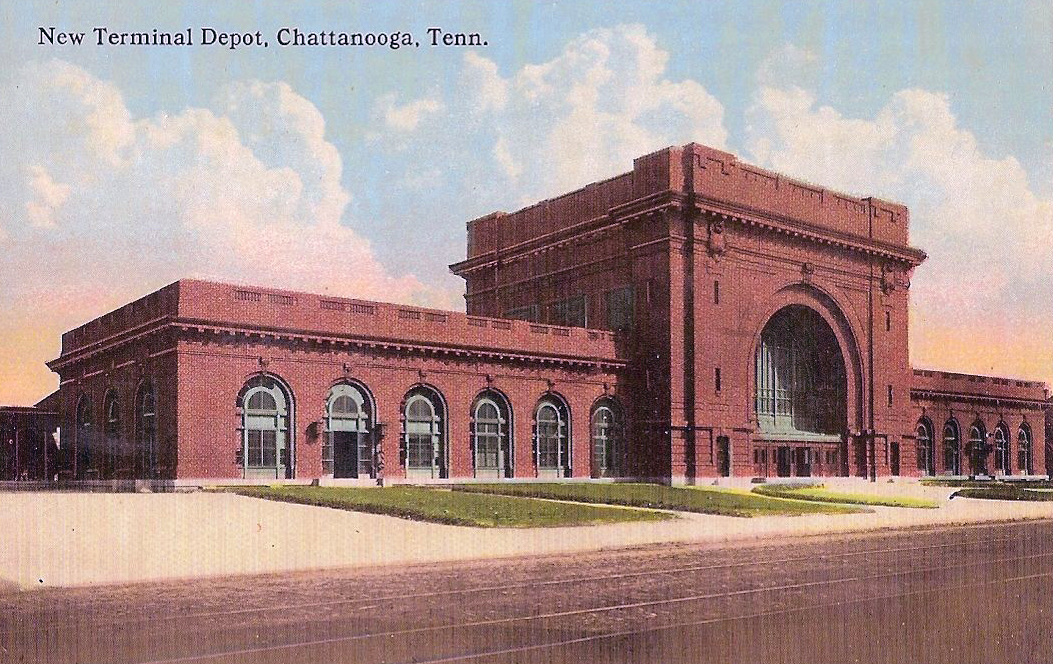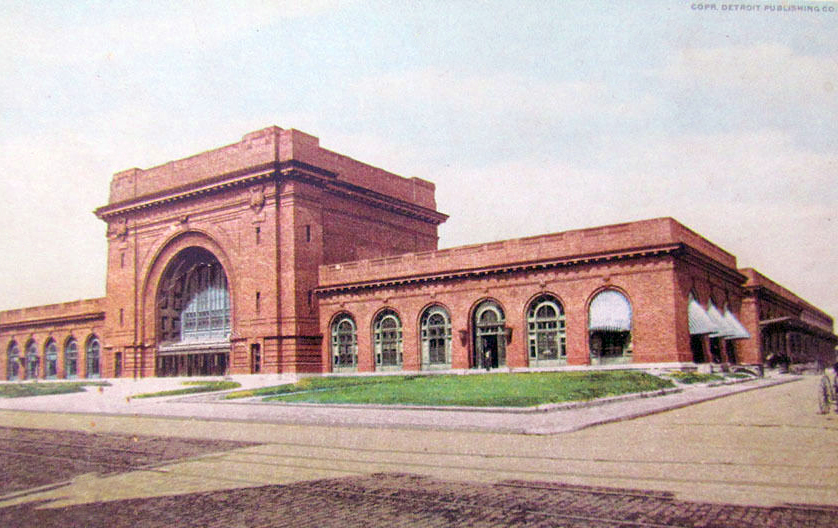The "Chattanooga Choo Choo," Historic Terminal Station
Last revised: September 9, 2024
By: Adam Burns
The Chattanooga Choo Choo today is a preserved railroad facility with roots dating back to the early 20th century. Given the appropriate name, Terminal Station, it was funded and built by the Southern Railway as its primary passenger complex serving the city of Chattanooga.
After being saved from near-certain destruction over 40 years ago, today the station serves in a similar fashion to that of St. Louis Union Station acting as a modern shopping and entertainment venue with its history well represented.
In its current state the building looks far different than it did during its heyday hosting trains.
However, the building's current owners have worked very hard to retain its heritage and you can find all kind of railroad-related themes throughout the premises such as a model railroad and "Dinner in the Diner."
If you are ever in the Chattanooga you should definitely stop by to see the station.
History
Situated along the Tennessee River and near the border of Alabama, Chattanooga, Tennessee was born in 1839 when the community of Ross's Landing was reincorporated.
It remained a relatively small settlement until the arrival of the Western & Atlantic during May of 1850, offering through service to Atlanta.
The new railroad, along with water access, witnessed the city's rapid expansion into an important commercial hub.
It became known as the spot "where cotton meets corn" since it was roughly the geographical boundary between farming regions of Southern Appalachia and cotton plantations of the South.
Despite the W&A's arrival and improvement in transportation the city still had no rail link to northern cities. Its location made such difficult.
Chattanooga is nestled between the southwestern Ridge-and-Valley Appalachian Mountains and the foot of Walden's Ridge. In addition to the rugged terrain the downtown area was split by the river making the prospect of laying a rail line very difficult.
A few years after the W&A's completion the Nashville & Chattanooga Railway (later Nashville, Chattanooga & St. Louis) arrived in Chattanooga during February of 1854 offering a link between its namesake cities.
The N&C also found the topography extremely rugged and difficult as it had to conquer the Highland Rim and Cumberland Plateau.
The N&C's new route further helped to open trade although it would take nearly 20 years after the Civil War until a direct link to the Midwest was established.
During the fervor of railroad construction after the war the city of Cincinnati yearned for a new corridor linking it to southern points.
Thanks to the efforts of Edward A. Ferguson an Ohio law was passed, enacted on May 4, 1869, which formed the Cincinnati Southern Railway.
It was charged with linking the city to Chattanooga and the 338-mile line was completed on December 10, 1879. The first freight trains rolled over the route on February 21, 1880 while the first passenger services commenced on March 8, 1880.
The system was later leased to the Cincinnati, New Orleans & Texas Pacific Railway, a subsidiary of the Southern Railway.
- Today, the Cincinnati Southern still exists, owned by the city. It remains leased to the CNO&TP, a subsidiary of Norfolk Southern. -
The so-called "Rathole Division" was a rugged route filled with tunnels, steep grades, and sharp curves. Despite its operational problems the corridor was a vital link for the Southern between Cincinnati and the Gulf Coast.
Over the years the railroad spent millions to straighten and open the line above Chattanooga and it remains an important route under Norfolk Southern.
The city's first important passenger terminal was Union Depot (sometimes referred to as Union Station), which opened in 1858.
This facility, located at Ninth (now Martin Luther King Boulevard) and Broad Streets hosted trains of the W&A and N&C while the Memphis & Charleston and East Tennessee & Georgia began using the facility by the Civil War.
The city's second notable terminal was Central Depot located at Market Street and Union Streets (now West 13th Street).
It opened in 1888 and served trains of the Cincinnati Southern, East Tennessee, Virginia & Georgia, Memphis & Charleston, and Alabama Great Southern.
As traffic and rail travel grew into the early 20th century the Southern realized it needed a much larger terminal.
The Stanton House property at Market and 14th Streets, which the Chattanooga Choo Choo currently occupies was purchased by the railroad in 1904 for around $71,000.
The railroad quickly demolished the building and cleared the ground for construction of its new station in 1906. It was designed in the Beaux Arts design (modeled after the National Park Bank in New York City) and an American, Don Barber, would be the architect.
Barber hailed from Paris's Beaux Arts Institute and the Southern's president of the time was so impressed with his design that Barber was actually requested in person for a face-to-face meeting.
Construction
Terminal Station opened for service on December 1, 1909 at a cost of $1.5 million. The interior featured a grand concourse highlighted by a beautiful arched dome (something which was actually rather common for the large stations of the time).
The dome spanned the entire length of the concourse, which was 68 feet wide by 82 feet high and featured four beautiful brass chandeliers adorning the ceiling above.
The facility hosted fourteen staging tracks and accompanying platforms.
It was situated slightly west of the Southern's main line on the eastern side of the Tennessee River via a stub-end layout (meaning trains had to back into and out of the terminal) and covered 24 acres altogether, including tracks and head house.
Many of the railroad's most prominent trains stopped at Terminal Station including:
- Birmingham Special (Washington - Birmingham)
- Florida Sunbeam (Cincinnati - Florida)
- Pelican (New York-New Orleans)
- Ponce de Leon (Cincinnati - Jacksonville)
- Queen & Crescent (Cincinnati-New Orleans)
- Royal Palm (Cincinnati-Jacksonville)
- Tennessean (Washington-Memphis)
During its peak years it hosted nearly 50 trains every day and thousands of daily passengers.
Alas, despite Southern's high class service and strong earnings potential, passenger traffic wanted after World War II as the public abandoned trains for automobiles and airliners.
 A present-day view of the Chattanooga Choo Choo as it appeared in April of 2010. Andrew Jameson photo.
A present-day view of the Chattanooga Choo Choo as it appeared in April of 2010. Andrew Jameson photo.By the 1960s the Southern dispatched only a few trains through Chattanooga until and by 1970 only trains #17 and #18 still called, the southbound and northbound Birmingham Special.
The train made its last run on August 11th and not long after the Southern closed the facility. Luckily, a group of local investors saw an opportunity in the old building and purchased it, spending nearly $4 million on the complex to restore it to its former glory.
Named after the song made famous by the Glenn Miller Orchestra the Chattanooga Choo Choo reopened to the public on April 11, 1973 as the Chattanooga Choo Choo Hilton and Entertainment Complex.
The building was then placed on the National Register of Historic Places in 1974 and went through new ownership in 1989 at which an additional $4 million was spent on a second restoration.
Over the years the Chattanooga Choo Choo has become one of the city's top attractions with three hotel buildings, five restaurants, retail shops, rose gardens, an antique trolley ride, model railroad museum/display among its notable features.
For instance, there is the "Dinner in the Diner" previously mentioned, housed in a restored streamlined diner car from the 1950s.
Then there is the coffee shop which also carries a train theme. Today, the building is a far cry from when it was nearly demolished in the early 1970s.
While the exterior looks very good all by itself since its restoration at night it truly comes alive with a massive neon steam locomotive adorning the roof and lights decorating the windows and roof.
If you are interested in spending the night at the station they have more restored streamlined rail cars on the premises, which have been fully restored and feature exquisite accommodations.
Additionally, you can also ride the nearby trolley, which operates every day of the week taking visitors on a short ride along the property.
Overall, the Chattanooga Choo Choo offers a unique experience catering to both the contemporary with their wide array of things to see and do as well as the historian and train enthusiast who are perhaps more interested in touring the grounds and learning about its history.
There are not many other such attractions to be found around the country. To visit the Choo Choo's official website please click here.
Recent Articles
-
Wisconsin Christmas Train Rides In Trego!
Dec 16, 25 07:22 PM
Among the Wisconsin Great Northern's most popular excursions are its Christmas season offerings: the family-friendly Santa Pizza Train and the adults-only Holiday Wine Train. -
Vermont's 'Wine Tasting' Train Rides
Dec 16, 25 07:16 PM
Known for its stunning green mountains, charming small towns, and burgeoning wine industry, Vermont offers a unique experience that seamlessly blends all these elements: wine tasting train rides. -
Rhode Island's 'Wine Tasting' Train Rides
Dec 16, 25 06:50 PM
It may the smallest state but Rhode Island is home to a unique and upscale train excursion offering wide aboard their trips, the Newport & Narragansett Bay Railroad.






